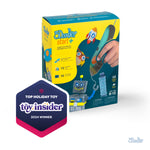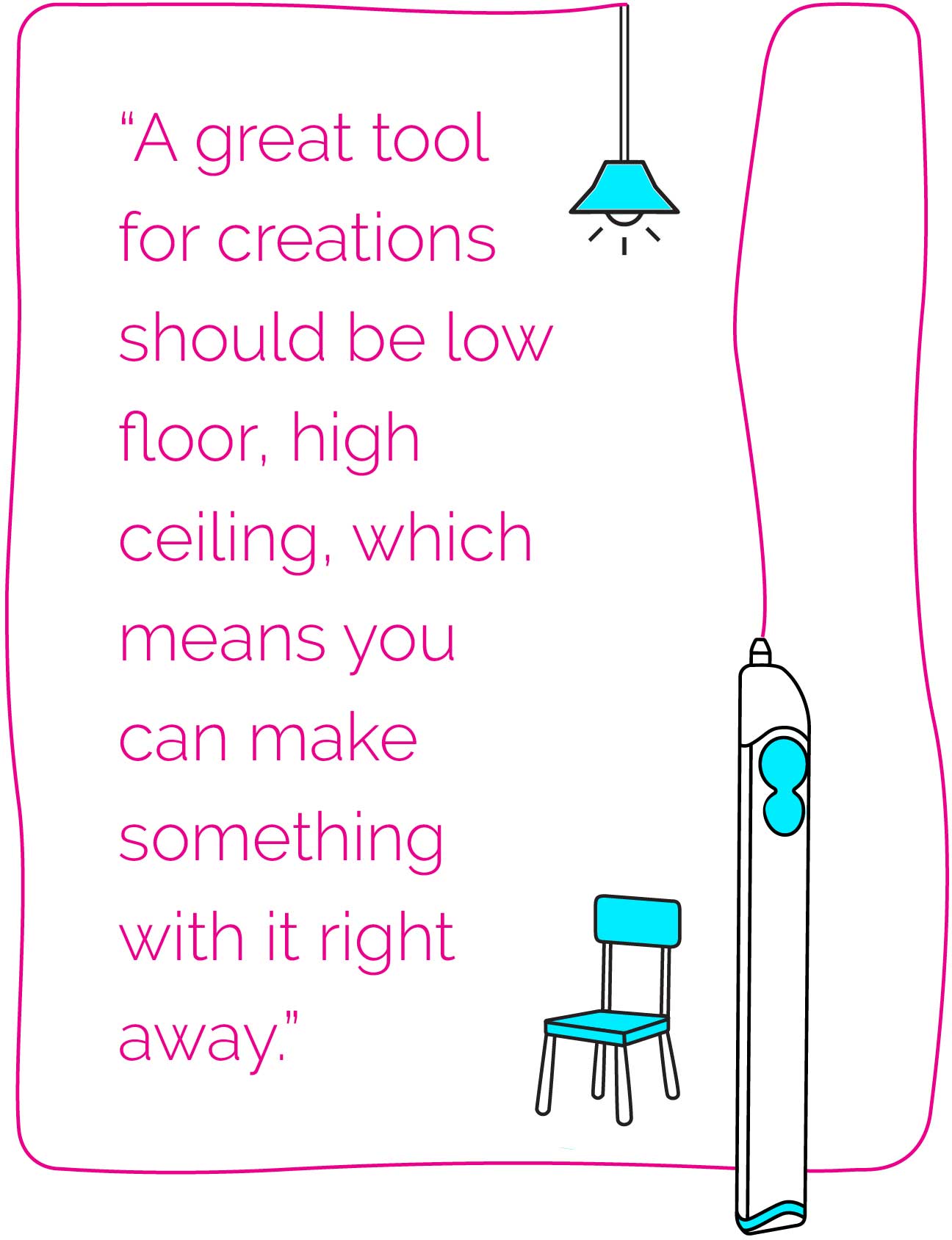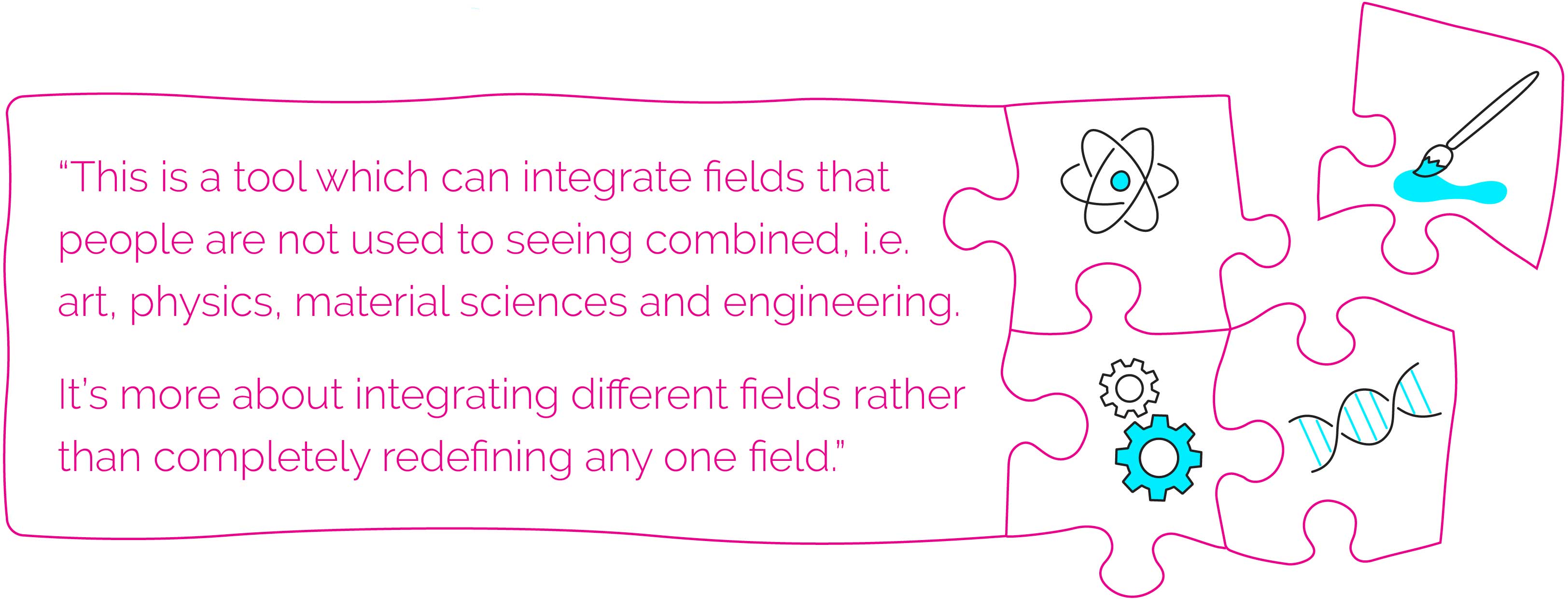In Critic’s Choice,speaks to members of the art world who explore what the 3Doodler means in a broader artistic context. Last week we spoke to New Media Art Professor Zhenzhen Qi.
This weekspoke to Kerri Gaudelli, an installation artist and educator at the prestigious Aldrich Contemporary Art Museum in Ridgefield, Connecticut. At the Aldrich, Gaudelli works to foster an understanding and appreciation of art in every visitor, through historical perspective and interpretation. She also organizes opportunities for visitors to explore their own creative impulses as inspired by the works they’ve seen at the Aldrich.
Kerri Gaudelli doesn’t believe she has ever seen anything quite like the 3Doodler.
That makes the tool particularly unique. In her time at the Aldrich Museum she has seen a wide range of modern and contemporary work created using an expansive array of mediums. The diversity of artists and work on display at the museum is extensive, and often includes work that crosses the boundary between two and three dimensions.

Gaudelli’s own art often involves converting a charcoal drawing into installation pieces, featuring pins and thread that interact with the space around them. As a result, she’s excited by the prospect of using the 3Doodler in her own work.
“The 3Doodler is a new way for artists to think about space,” she says. “It can let them expand and bring their work to life. Letting them bring it out of 2D and into 3D allows them to work on the canvas as well as the wall, or anywhere, really, and often with the same amount of skill.”

While Gaudelli has yet to see a museum display that evokes the exact same look or feel as the 3Doodled work she’s seen, she believes the pen’s ability to work across dimensions and mediums would fit naturally into museum spaces both as a medium and as a learning tool. Gaudelli was impressed by the painterly sculpture of Rachel Goldsmith, which clearly showcased the 3Doodler’s ability to enable a new exploration of space.
“I think it would be a great experiment. My own work has a lot to do with structure, building, and translating from 2D to 3D and back, which is exactly what this pen does.” Gaudelli also said she feels the 3Doodler would be an excellent tool to have on hand at the Aldrich, particularly for the educational programs she runs for children.
“I’m the Education Program Assistant at The Aldrich. Which means I help run and write content for our school programs,” Guadelli said. “I also foster the relationship between schools and the Aldrich, and do outreach to help get students into the Museum.” To be effective at her job, Gaudelli often has to interpret how students as young as 3rd grade might see the museum, and help design an engaging experience for that particular point of view.
The Aldrich is multi-discipline as well as multi-media, and routinely hosts STEAM education events. STEAM education—which combines Art with the Science, Technology, Education and Mathematics of STEM programs—combines the strengths of all five modes of thinking. The Aldrich’s “Full STEAM Ahead” events feature symposiums and presentations about STEAM principals in education and society, as well as practical opportunities for students to investigate the topics and materials directly.
“Our STEAM tours would be a great fit for the 3Doodler,” Gaudelli said of the 3Doodler as a potential educational tool at the Museum.

“These are programs that let kids explore the galleries and artists on display at the museum and try to figure out what the artists are inspired by and interested in based on the works themselves and STEAM thinking. We recently had an exhibit with a piece that consisted of a deconstructed 1976 John Deere combine harvester. The artist used it as a metaphor to show the interconnectedness of different parts of the environment. It’s a real chance for the kids to come to understand space, and the use of something comparatively high-tech would fit really well. I think students would take to it right away.”
Gaudelli believes that the 3Doodler could be a way to open not just new directions for drawing, but also for thinking about art. “It really is the ultimate STEAM tool because it combines so many different ways of thinking, different dimensions, as well as science and technology behind it, and it uses all of that to create artwork.”![]()







